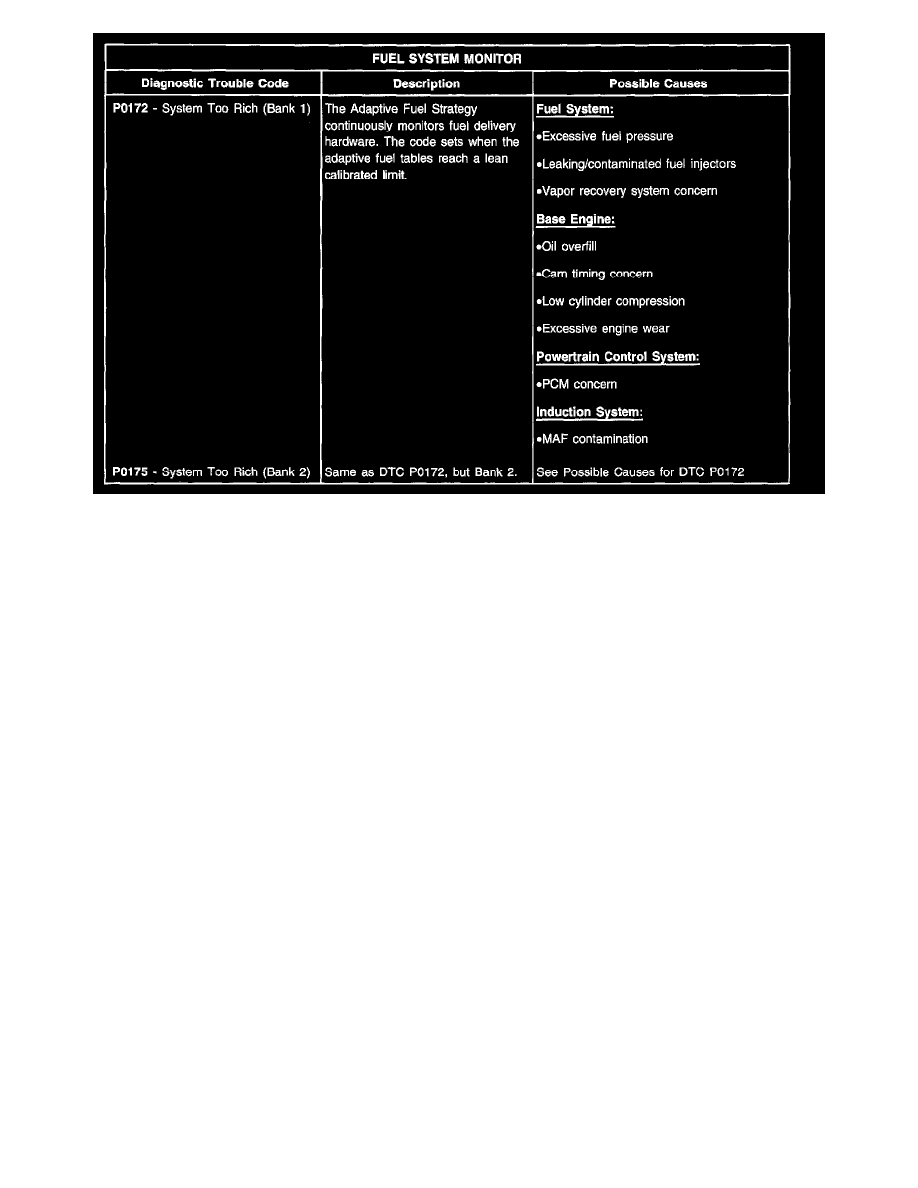Econoline E350 1 Ton V8-5.4L Prop SOHC VIN Z (1998)

E2.) Fuel System Monitor - Diagnostic Trouble Codes
F. Diagnostic Service Tips
1.
Always reset KAM after performing a repair:
After performing a repair on a vehicle with the MIL on, and/or DTCs present, always clear KAM. When a malfunction is present, the PCM adapts
(attempts to correct) for this condition. Once the vehicle has been repaired, if the KAM is not reset, the PCM will once again have to adapt back to
the normal operating conditions. Clearing the KAM will erase what the PCM has learned, so the PCM will be able to start with "base tables".
2.
Always view and record Freeze Frame Data:
Freeze Frame Data can be a valuable asset in duplicating and diagnosing concerns. This data (a snapshot of certain PID values, recorded at the
time the MIL was activated) indicates the manner in which the vehicle was being driven at the time the fault occurred. This can be especially
useful on intermittent concerns. Freeze Frame Data, in some cases, can also help to isolate possible areas of concern, as well as ruling out others.
Always record (write down) the Freeze Frame Data.
3.
Multiple DTCs (with the same meaning):
When multiple (paired) DTCs with the same meaning are set for multiple sensors, it is unlikely that replacing both HO2S sensors will resolve the
concern. In most cases, there will be another issue that is causing the codes. Examples of multiple (paired) DTCs:
(P0135/P0155), (P0141/P0161), (P1131/P1151), (P1132/P1152).
To further clarify this, see the more detailed scenario as follows:
A vehicle comes in with a MIL On concern. KOEO self test reveals DTCs P0135 and P0155 (HTR-11 and HTR-21 circuit malfunction), with no other
DTCs present. The most likely cause of these DTCs would be something in the heater power circuit that both of these HO2S sensors have in common
(Example: open or shorted heater circuit wiring or splice). It is highly unlikely that multiple sensors would fail at the same time. When multiple DTCs of
this nature are encountered, reviewing the appropriate wiring diagram(s) can help to isolate possible areas of concern. When reviewing the wiring
diagram, look for things that the affected sensors have in common.
